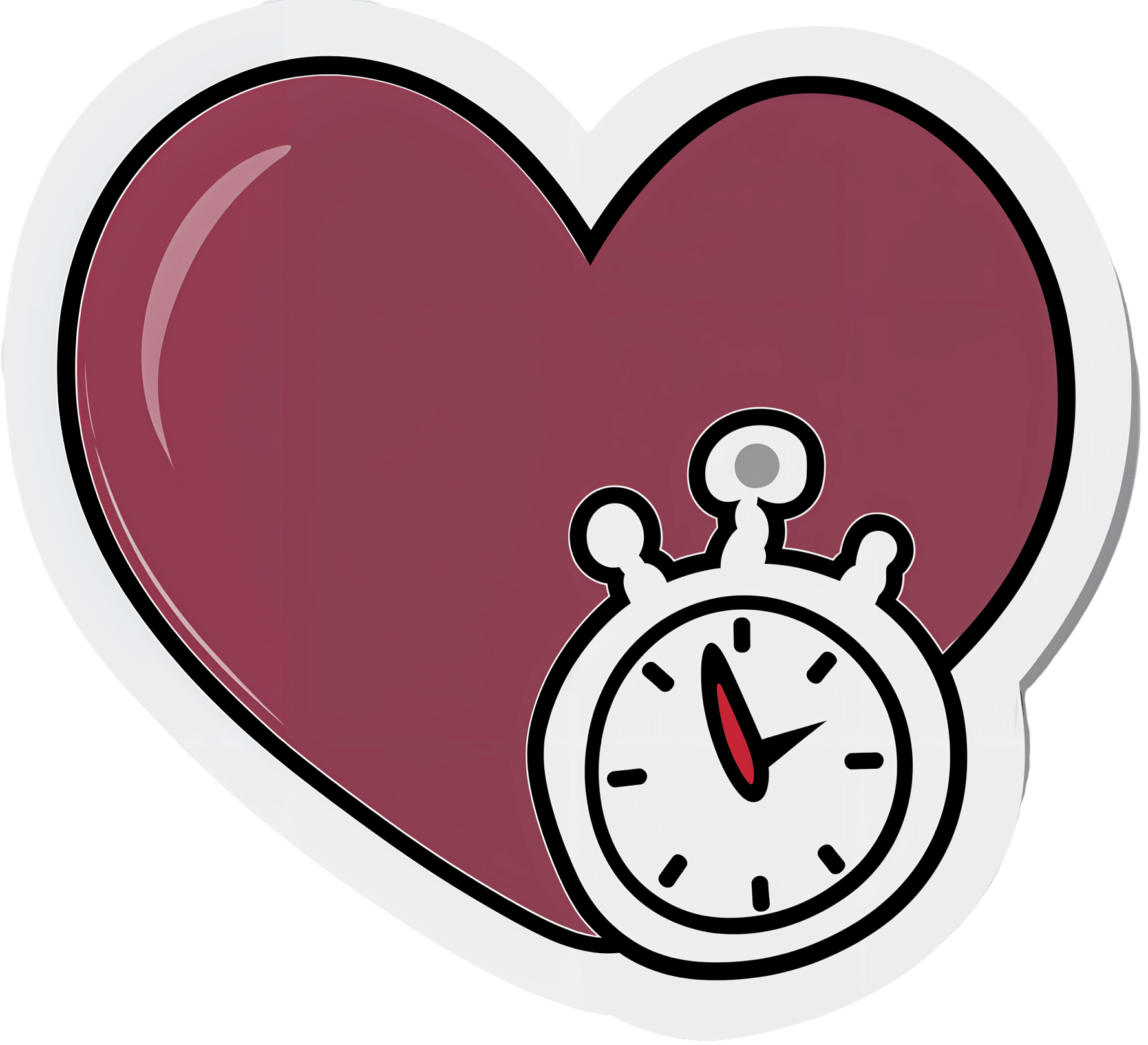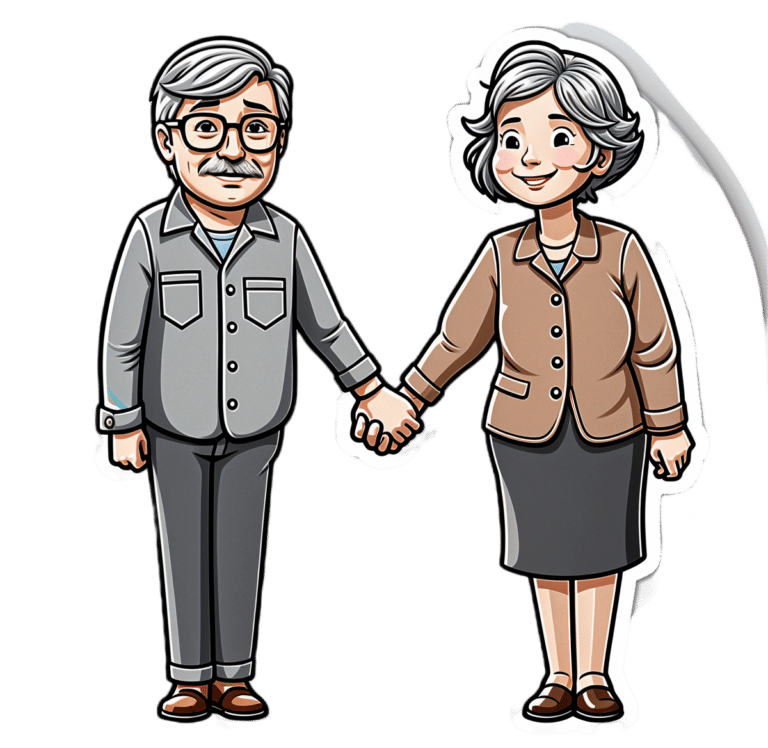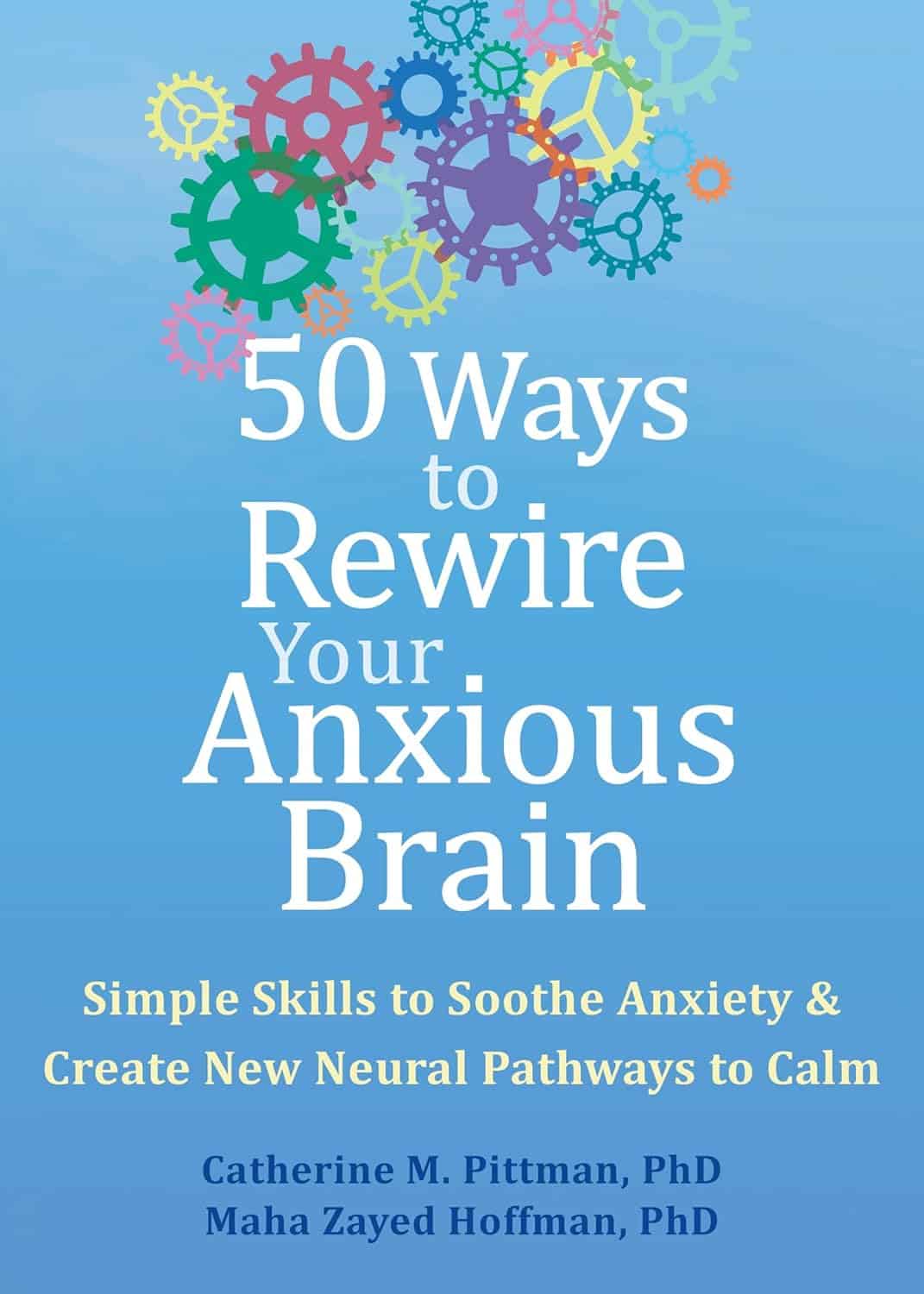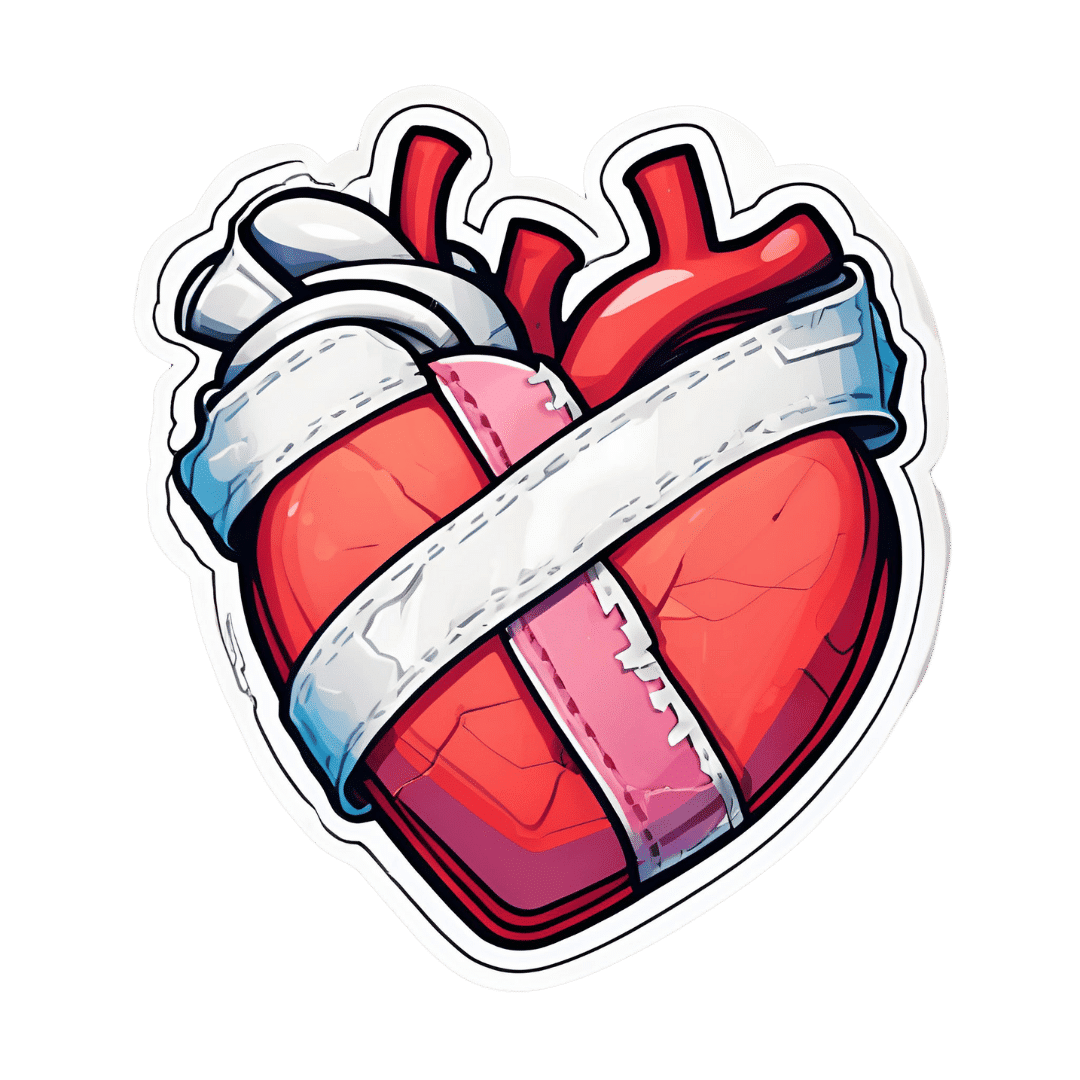
How To Improve Your Heart Rate Variability
10almonds is reader-supported. We may, at no cost to you, receive a portion of sales if you purchase a product through a link in this article.
How’s your heart rate variability?
The hallmarks of a good, strong cardiovascular system include a medium-to-low resting heart rate (for adults: under 60 beats per minute is good; under 50 is typical of athletes), and healthy blood pressure (for adults: under 120/80, while still above 90/60, is generally considered good).
Less talked-about is heart rate variability, but it’s important too…
What is heart rate variability?
Heart rate variability is a measure of how quickly and easily your heart responds to changes in demands placed upon it. For example:
- If you’re at rest and then start running your fastest (be it for leisure or survival or anything in between), your heart rate should be able to jump from its resting rate to about 180% of that as quickly as possible
- When you stop, your heart rate should be able to shift gears back to your resting rate as quickly as possible
The same goes, to a commensurately lesser extent, to changes in activity between low and moderate, or between moderate and high.
- When your heart can change gears quickly, that’s called a high heart rate variability
- When your heart is sluggish to get going and then takes a while to return to normal after exertion, that’s called a low heart rate variability.
The rate of change (i.e., the variability) is measured in microseconds per beat, and the actual numbers will vary depending on a lot of factors, but for everyone, higher is better than lower.
Aside from quick response to crises, why does it matter?
If heart rate variability is low, it means the sympathetic nervous system is dominating the parasympathetic nervous system, which means, in lay terms, your fight-or-flight response is overriding your ability to relax.
See for example: Stress and Heart Rate Variability: A Meta-Analysis and Review of the Literature
This has a lot of knock-on effects for both physical and mental health! Your heart and brain will take the worst of this damage, so it’s good to improve things for them impossible.
This Saturday’s Life Hacks: how to improve your HRV!
Firstly, the Usual Five Things™:
- A good diet (that avoids processed foods)
- Good exercise (that includes daily physical activity—more often is more important than more intense!)
- Good sleep (7–9 hours of good quality sleep per night)
- Reduce or eliminate alcohol consumption (this is dose-dependent; any reduction is an improvement)
- Don’t smoke (just don’t)
Additional regular habits that help a lot:
- Breathing exercises, mindfulness, meditation
- Therapy, especially CBT and DBT
- Stress-avoidance strategies, for example:
- Get (and maintain) your finances in good order
- Get (and maintain) your relationship(s) in good order
- Get (and maintain) your working* life in good order
*Whatever this means to you. If you’re perhaps retired, or otherwise a home-maker, or even a student, the things you “need to do” on a daily basis are your working life, for these purposes.
In terms of simple, quick-fix, physical tweaks to focus on if you’re already broadly leading a good life, two great ones are:
- Exercise: get moving! Walk to the store even if you buy nothing but a snack or drink to enjoy while walking back. If you drove, make more trips with the shopping bags rather than fewer. If you like to watch TV, consider an exercise bike or treadmill to use while watching. If you have a partner, double-up and make it a thing you do together! Take the stairs instead of the elevator. Take the scenic route when walking someplace. Go to the bathroom that’s further away. Every little helps!
- Breathe: even just a couple of times a day, practice mindful breathing. Start with even just a minute a day, to get the habit going. What breathing exercise you do isn’t so important as that you do it. Notice your breathing; count how long each breath takes. Don’t worry about “doing it right”—you’re doing great, just observe, just notice, just slowly count. We promise that regular practice of this will have you feeling amazing
Don’t Forget…
Did you arrive here from our newsletter? Don’t forget to return to the email to continue learning!
Recommended
Learn to Age Gracefully
Join the 98k+ American women taking control of their health & aging with our 100% free (and fun!) daily emails:
-
When You “Should” Be In Better Shape
10almonds is reader-supported. We may, at no cost to you, receive a portion of sales if you purchase a product through a link in this article.
It’s easy to think that we “should” be many things that we aren’t. However, it can be counterproductive to implementing real change:
The problem with “should”
The word “should” often sabotages changes in mindset and habit formation. Saying things like “I should be further along” typically leads to frustration, feelings of failure, and ultimately a lack of motivation to take action. Yes, in the first instance, “I should…” can be a motivator, but when your goals are not achieved by the second session, and the “I should…” is still there, the subconscious says “well, clearly this is not working”. Even though the conscious mind can easily see the fallacy in that dysfunctional line of thinking, the subconscious is easily swayed by such things, and in turn easily sways our actual behaviors.
Also, even before that, if goals feel impossible, people often do nothing instead of making small, manageable changes.
So, what should we do instead?
Step 1: assess your current lifestyle and priorities. Your current results are a reflection of past habits and actions, including dieting practices, inconsistent workouts, and lack of planning. Instead of searching for a “perfect plan,” first acknowledge your current lifestyle and priorities. Then, identify which habits are beneficial, which ones hold you back, and what common excuses you make. By understanding where you are now, you can create a sustainable plan that fits your life rather than fighting against it.
Step 2: define your future lifestyle. It’s not enough to just set goals—you need to define what the lifestyle associated with those goals looks like. Recognize that real change requires adjustments in habits and routines. Don’t stress over whether these changes feel overwhelming; simply identify what might be necessary. Writing things down (and then consulting them often, not just putting them away never to be seen again) makes them more tangible and helps create a roadmap for progress.
Step 3: make one small change today. Rather than making vague or overwhelming changes, start with one small, realistic step that aligns with your goals. Building momentum through cumulatively beneficial small actions leads to longer-lasting motivation. Also, instead of focusing on what you need to cut out, look for positive habits to add, as this makes change easier. Track your progress visibly—like using a checklist—and commit to revisiting and adding new changes weekly.
For more on all of this, enjoy:
Click Here If The Embedded Video Doesn’t Load Automatically!
Want to learn more?
You might also like:
How To Plan For The Unplannable And Always Follow Through
Take care!
Share This Post
-
50 Ways To Rewire Your Anxious Brain – by Dr. Catherine Pittman & Dr. Maha Zayed-Hoffman
10almonds is reader-supported. We may, at no cost to you, receive a portion of sales if you purchase a product through a link in this article.
The book is divided into sections:
- Calming the amygdala
- Rewiring the amygdala
- Calming the cortex
- Resisting cortex traps
…each with a dozen or so ways to do exactly what it says in the title: rewire your anxious brain.
The authors take the stance that since our brain is changing all the time, we might as well choose the direction we prefer. They then set out to provide the tools for the lay reader to do that, and (in that fourth section we mentioned) how to avoid accidentally doing the opposite, no matter how tempting doing the opposite may be.
For a book written by two PhD scientists where a large portion of it is about neuroscience, the style is very light pop science (just a few in-line citations every few pages, where they couldn’t resist the urge), and the focus is on being useful to the reader throughout. This all makes for reassuringly science-based but accessibly readable book.
The fact that the main material comes in the form of 50 very short chapters also makes it a lot more readable for those for whom sitting down to read a lot at a time can be off-putting.
Bottom line: if you experience anxiety and would like to experience it less, this book will guide you through how to get there.
Click here to check out 50 Ways To Rewire Your Anxious Brain, and rewire your anxious brain!
Share This Post
-
Can Ginkgo Tea Be Made Safe? (And Other Questions)
10almonds is reader-supported. We may, at no cost to you, receive a portion of sales if you purchase a product through a link in this article.
It’s Q&A Day at 10almonds!
Have a question or a request? You can always hit “reply” to any of our emails, or use the feedback widget at the bottom!
In cases where we’ve already covered something, we might link to what we wrote before, but will always be happy to revisit any of our topics again in the future too—there’s always more to say!
As ever: if the question/request can be answered briefly, we’ll do it here in our Q&A Thursday edition. If not, we’ll make a main feature of it shortly afterwards!
So, no question/request too big or small
❝I’d be interested in OTC prostrate medication safety and effectiveness.❞
Great idea! Sounds like a topic for a main feature one day soon, but while you’re waiting, you might like this previous main feature we did, about a supplement that performs equally to some prescription BPH meds:
❝Was very interested in the article on ginko bilboa as i moved into a home that has the tree growing in the backyard. Is there any way i can process the leaves to make a tea out of it.❞
Glad you enjoyed! First, for any who missed it, here was the article on Ginkgo biloba:
Ginkgo Biloba, For Memory And, Uh, What Else Again?
Now, as that article noted, Ginkgo biloba seeds and leaves are poisonous. However, there are differences:
The seeds, raw or roasted, contain dangerous levels of a variety of toxins, though roasting takes away some toxins and other methods of processing (boiling etc) take away more. However, the general consensus on the seeds is “do not consume; it will poison your liver, poison your kidneys, and possibly give you cancer”:
Ginkgo biloba L. seed; A comprehensive review of bioactives, toxicants, and processing effects
The leaves, meanwhile, are much less poisonous with their ginkgolic acids, and their other relevant poison is very closely related to that of poison ivy, involving long-chain alkylphenols that can be broken down by thermolysis, in other words, heat:
However, this very thorough examination of the potential health benefits and risks of ginkgo tea, comes to the general conclusion “this is not a good idea, and is especially worrying in elders, and/or if taking various medications”:
In summary:
- Be careful
- Avoid completely if you have a stronger-than-usual reaction to poison ivy
- If you do make tea from it, green leaves appear to be safer than yellow ones
- If you do make tea from it, boil and stew to excess to minimize toxins
- If you do make tea from it, doing a poison test is sensible (i.e. start with checking for a skin reaction to a topical application on the inside of the wrist, then repeat at least 6 hours later on the lips, then at least 6 hours later do a mouth swill, then at least 12 hours later drink a small amount, etc, and gradually build up to “this is safe to consume”)
For safety (and legal) purposes, let us be absolutely clear that we are not advising you that it is safe to consume a known poisonous plant, and nor are we advising you to do so.
But the hopefully only-ever theoretical knowledge of how to do a poison test is a good life skill, just in case
Share This Post
Related Posts
-
Asparagus vs Eggplant – Which is Healthier?
10almonds is reader-supported. We may, at no cost to you, receive a portion of sales if you purchase a product through a link in this article.
Our Verdict
When comparing asparagus to eggplant, we picked the asparagus.
Why?
In terms of macros, they’re very similar. Technically asparagus has twice the protein, but it’s at 2.2g/100g compared to eggplant’s 0.98g/100g, so it’s not too meaningful. They’re both mostly water, low in carbs, with a little fiber, and negligible fat (though eggplant technically has more fat, but again, these numbers are miniscule). For practical purposes, the two vegetables are even in this category, or if you really want decisive answers, a tiny margin of a win for asparagus.
In the category of vitamins, asparagus is much higher in vitamins A, B1, B2, B3, B5, B6, B9, E, & K, as well as choline. Eggplant is not higher in any vitamins. A clear win for asparagus.
When it comes to minerals, asparagus is much higher in calcium, copper, iron, phosphorus, selenium, and zinc, while eggplant is a little higher in manganese. Another easy win for asparagus.
Lastly, asparagus wins on polyphenols too, with its high quercetin content. Eggplant does contain some polyphenols, but in such tiny amounts that even added up they’re less than 7% of what asparagus has to offer in quercetin alone.
Obviously, enjoy both, though! Diversity is healthy.
Want to learn more?
You might like to read:
Fight Inflammation & Protect Your Brain, With Quercetin
Take care!
Don’t Forget…
Did you arrive here from our newsletter? Don’t forget to return to the email to continue learning!
Learn to Age Gracefully
Join the 98k+ American women taking control of their health & aging with our 100% free (and fun!) daily emails:
-
Beetroot Juice & Caffeine Work Better Than Either Alone
10almonds is reader-supported. We may, at no cost to you, receive a portion of sales if you purchase a product through a link in this article.
Beetroot has many beneficial properties, which we’ve written about before:
Beetroot For More Than Just Your Blood Pressure
…and as for caffeine, it’s a mixed bag but for most people, the benefits of moderate caffeine use outweigh the risks:
Caffeine: Cognitive Enhancer Or Brain-Wrecker?
Now, caffeine’s less desirable effects can be mitigated somewhat by pairing it with l-theanine, as we’ve also discussed before:
L-Theanine: What’s The Tea? ← l-theanine also has many wonderful properties of its own, aside from its complementary effects when taken alongside caffeine
So, what’s the deal with caffeine and beetroot juice?
A performance-enhancing balancing act
Caffeine raises blood pressure, while beetroot lowers it, but there’s a lot more to it than that.
Researchers looked into the effects of caffeine and beetroot juice, together or separately, on athletic performance (in a 1000m run) in non-athletes.
They found:
- Caffeine alone enhanced second-run performance but not the first.
- Beetroot juice alone improved first-run performance but led to a performance decline after recovery.
- The caffeine + BJ combo resulted in the best initial and repeated 1000m run performances.
Specifically, they also noted:
- Caffeine alone caused higher blood lactate levels post-exercise.
- Beetroot juice increased muscle oxygenation by 25% during runs.
- The caffeine + BJ combo led to the highest post-exercise heart rate improvements.
You can read the paper in full here:
Caffeine and Beetroot Juice Optimize 1,000-m Performance: Shapley Additive Explanations Analysis
Now, maybe you don’t have a 1000m run to do, let alone multiple ones back-to-back, but most of us could sometimes do with an energy boost during the day, and this seems like an excellent way to get it.
That said, caffeine timing can be important too; midday is generally the best time for it, because:
- of course it should not be too late in the day, because the elimination half-life of caffeine (4–8 hours to eliminate just half of the caffeine, depending on genes, call it 6 hours as an average though honestly for most people it will either be 4 or 8, not 6) is such that it can easily interfere with sleep for most people
- because caffeine is an adenosine blocker, not an adenosine inhibitor, taking caffeine in the morning means either there’s no adenosine to block, or it’ll just “save” that adenosine for later, i.e. when the caffeine is eliminated, then the adenosine will kick in, meaning that your morning sleepiness has now been deferred to the afternoon, rather than eliminated.
Another reminder that caffeine is the “payday loan” of energy. So, midday it is. No morning sleepiness to defer, and yet also not so late as to interfere with sleep.
See also: Calculate (And Enjoy) The Perfect Night’s Sleep
Want to learn more?
Check out:
The Best Form Of Sugar For Energy During Exercise
Enjoy!
Don’t Forget…
Did you arrive here from our newsletter? Don’t forget to return to the email to continue learning!
Learn to Age Gracefully
Join the 98k+ American women taking control of their health & aging with our 100% free (and fun!) daily emails:
-
How To Know When You’re Healing Emotionally
10almonds is reader-supported. We may, at no cost to you, receive a portion of sales if you purchase a product through a link in this article.
The healing process can be humbling but rewarding, leading to deep fulfillment and inner peace. Discomfort in healing can be part of growth and self-integration. Because of that, progress sometimes looks and/or feels like progress… And sometimes it doesn’t. Here’s how to recognize it, though:
Small but important parts of a bigger process
Nine signs indicating you are healing:
- Allowing emotions: you acknowledge and process both negative and positive emotions instead of suppressing them.
- Improved boundaries: you improve at expressing and maintaining boundaries, overcoming fear of rejection, guilt, and shame.
- Acceptance of past: you accept difficult past experiences and their impact, reducing their hold over you.
- Less reactivity: you become less reactive and more thoughtful in responses, practicing emotional self-regulation.
- Non-linear healing: you understand that healing involves ups and downs and isn’t a straightforward journey.
- Stepping out of your comfort zone: you start taking brave steps that previously induced fear or anxiety.
- Handling disappointments: you accept setbacks and respond to them healthily, without losing motivation.
- Inner peace: you develop a sense of wholeness, and forgiveness for yourself and others, reducing self-sabotage.
- Welcoming support: you become more open to seeking and accepting help, moving beyond pride and shame.
In short: healing (especially the very first part: accepting that something needs healing) can be uncomfortable but lead to much better places in life. It’s okay if healing is slow; everyone’s journey is different, and doing your best is enough.
For more on each of these, enjoy:
Click Here If The Embedded Video Doesn’t Load Automatically!
Want to learn more?
You might also like:
Why You Can’t Just “Get Over” Trauma
Take care!
Don’t Forget…
Did you arrive here from our newsletter? Don’t forget to return to the email to continue learning!
Learn to Age Gracefully
Join the 98k+ American women taking control of their health & aging with our 100% free (and fun!) daily emails:







